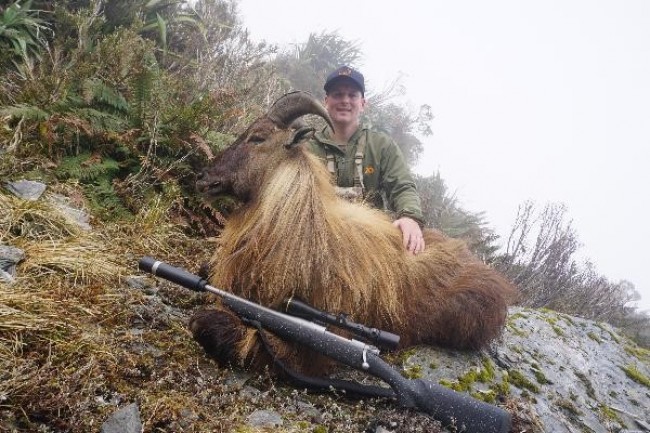|
Here's an update regarding the DOC tahr cull, ballot and operational plan.
2021 Tahr Ballot - closes 30th October
Firstly, a friendly reminder, the 2021 Tahr Ballot closes tomorrow, 30th October 2020. Apply now! Details and bookings are via DOC's website at Tahr Ballot Application.
NZDA submitted to DOC that the full 12 week ballot period should be made available to recreational hunters and it's pleasing to see our commonsense request for access has been taken up by DOC. This results in more hunters in the wilderness zones of the Southern Alps after tahr, which is one positive outcome of the High Court ordered re-consultation.
DOC stepped up culling recently
A recent Timaru Herald Article published 23rd October 2020 noted DOC undertook about 200 hours of tahr control across the seven tahr management units on public conservation land within the feral range.
Frankly, it is disappointing to read in the article mis-information being quoted, which we also saw in the High Court too, for example, the "limit" of tahr is not 10,000 in the 1993 Plan. The plan actually says between 10,000 to 50,000 tahr should not cause adverse impacts to the environment, and that 10,000 animals will not cause damage. Hunting organisations like NZDA and the Tahr Foundation need to keep DOC honest and make them understand and implement the plan without bias. One aspect NZDA insists on is that data and science should underpin official DOC control intervention levels.
We have also received, and heard of many reports contrary to the statement that "We [DOC] made a decision to avoid popular hunting spots and huts and have instead focused on controlling high densities of tahr within terrain that is less suitable for ground hunting." It seems the helicopter crews carrying out the culls are not meeting this standard and NZDA have made an official complaint to DOC seeking an investigation. We are waiting to hear back.
TPILG Tahr Research and Monitoring Workshop, 15th October 2020 in Christchurch
This meeting was organised by DOC for members of the TPILG to look at and discuss what areas of research are the most important.
The NZDA was represented by Craig Benbow, National President, David Keen, NZDA Tahr Rep, and, by Zoom Gwyn Thurlow, NZDA CEO.
John Parkes presented his draft research and monitoring strategy to support the management of Himalayan Tahr in New Zealand.
The structure of his research is focused around six research themes:
- Tahr Population dynamics and ecology
- Environmental impacts of tahr
- Understanding Hunting and Culling
- Social and economic values and costs
- Site based management (tahr and other introduced mammals in the alpine ecosystem)
- Research with no direct tahr management impacts
NZDA’s main and most important focus at this time is ensuring proper assessment of tahr populations and commitment to a well planned vegetation monitoring regime. Considering the rapid changes to tahr densities as a result of recent culling operations getting meaningful and robust data requires time and money and changes will rapidly occur in areas where populations have changed largely.
The vastly different situation across vegetation covers and research methods we have now to the one we had when the moratorium was put on hunting tahr was acknowledged so there are challenges to even getting base line data on vegetation and the measures used to assess animal impact.
We must know what is happening with the population before we can make a decision on any proposed control plan. The lack of sex and age structure data makes any attempts at population modeling near on impossible. Ongoing harvest and natural attrition of mature bulls needs to be considered in terms of overall population as well.
It is clear that all parties want more research completed around the tahr herd and its impacts but it is not clear where the money to pay for it would come from. While DOC do have a budget available it is a small sum when you consider the cost of actually doing the level of work required to get real unbiased data in an attempt start to build a picture of what is going on in the feral range.
Short workshop sessions attempted to identify key elements of what needs to occur with regard to each of the themes provided. Some robust discussions and points of interest were raised across all groups and engagement of representation across all the interest sectors is valuable even when there are widely ranging views and motivations.
A further meeting in December will be held to further discussions.
Tahr Survey Winner Trip Delayed to May 2021
The winners of the tahr survey were due to fly into the hills on the West Coast but typical for the Coast the weather was poor and visibility low. At the last minute we rescheduled to the rut in May and so we're all looking forward to having a great hunt next year.

Gwyn Thurlow, Chief Executive, with a 13+" trophy bull shot in Westland Tai Poutini National Park (Management Unit 4 in the 1993 Plan).
|